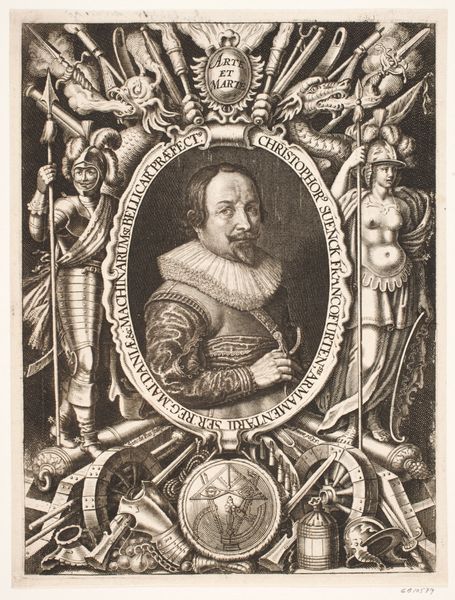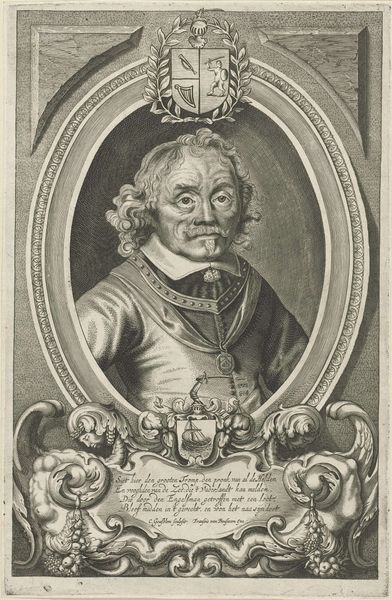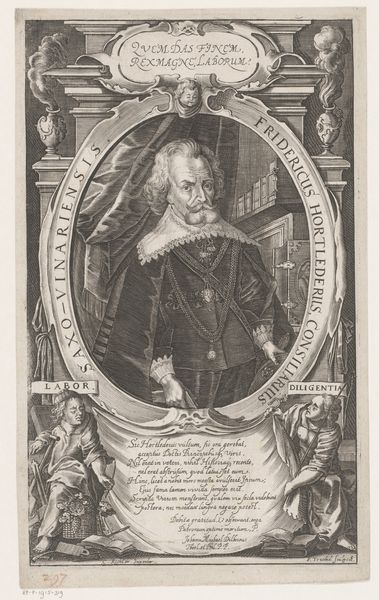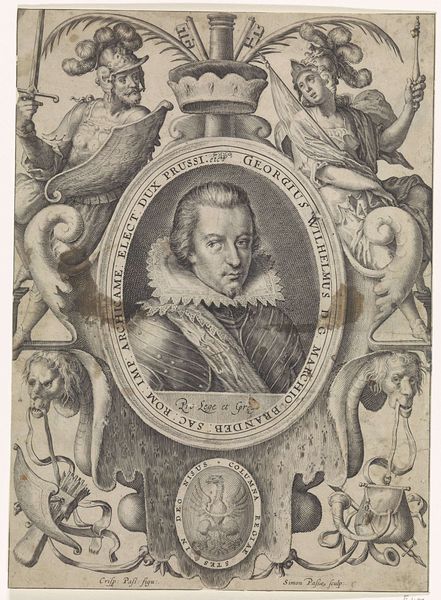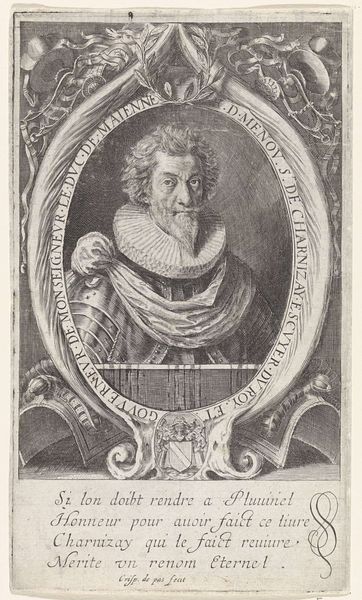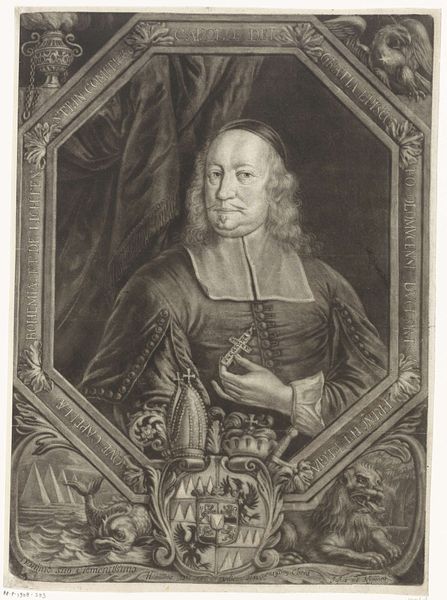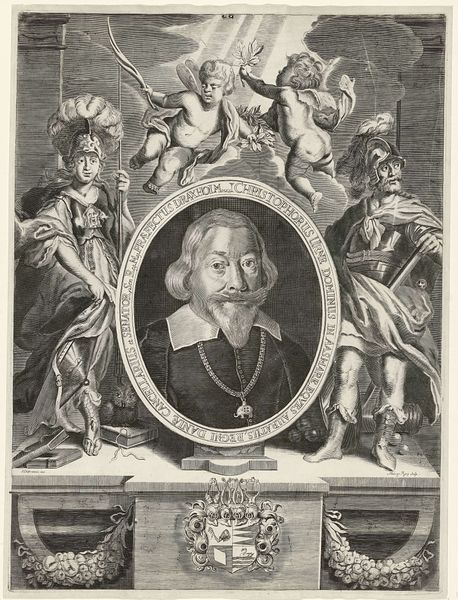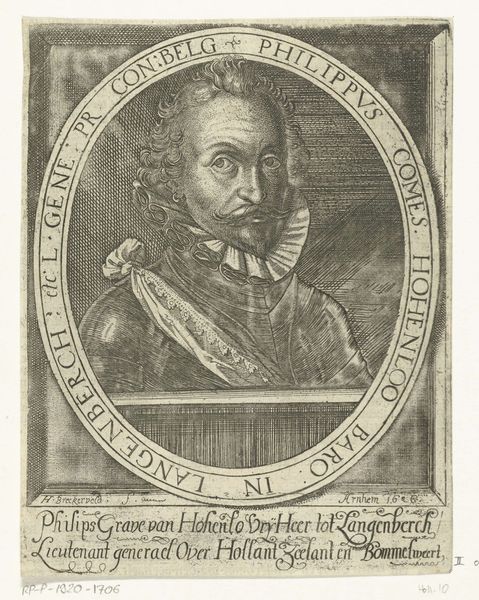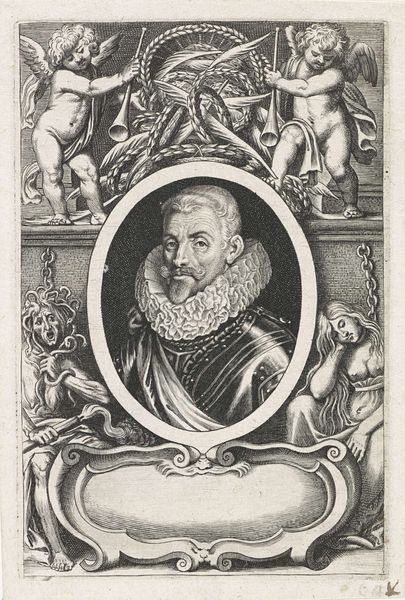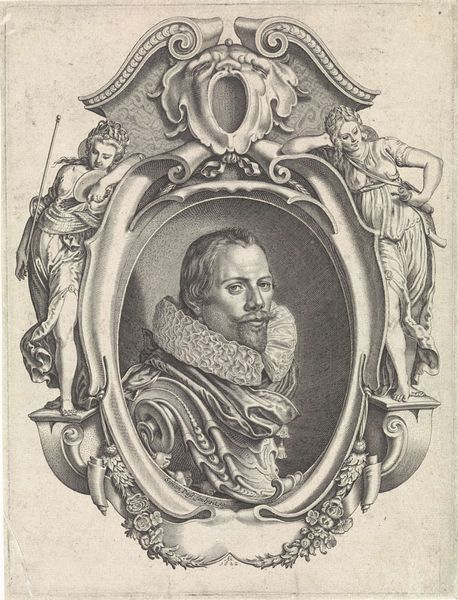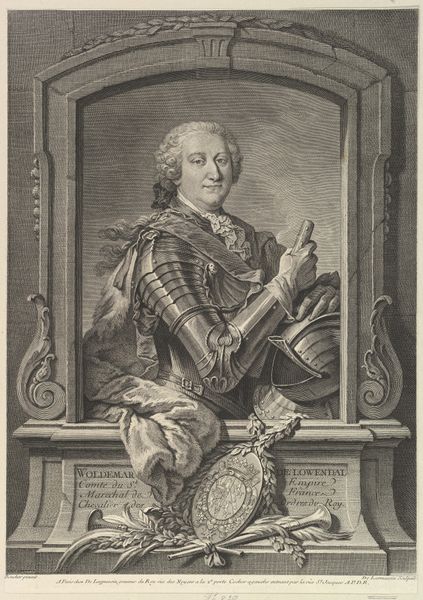
print, engraving
#
portrait
#
baroque
#
pen drawing
# print
#
figuration
#
line
#
history-painting
#
engraving
Dimensions: height 255 mm, width 168 mm
Copyright: Rijks Museum: Open Domain
Curator: This is a print, an engraving made by Cornelis Galle I, depicting "Portret van Ferdinand van Oostenrijk,” likely dating from somewhere between 1634 and 1654. It’s currently held here at the Rijksmuseum. Editor: Immediately, what strikes me is the intricate level of detail achieved through engraving. Look at the density of lines that create shadow and volume, especially on Ferdinand's armor. What inks were accessible for creating tonal variation, and how many plates? Curator: The choice of engraving as a medium speaks volumes about the intended audience. Prints like these allowed for widespread dissemination of Ferdinand's image, crucial for solidifying his presence and power. Think of them as an early form of mass media! It allowed his iconography to travel. Editor: Yes, and that accessibility shaped consumption. By choosing printmaking—a technique allowing relatively easy replication—rather than, say, an oil painting, Galle made this image and Ferdinand more *available*. Who owned this print? Where was it hung, how long, and by whom? I like the material quality of what would’ve gone into production. What kind of paper? Was the print hand-colored? Curator: Precisely. The symbols throughout reinforce this message of authority. Note the Habsburg coat of arms above Ferdinand, flanked by draped cloth suggesting majesty and victory. And look at those defeated, almost writhing figures below; chained, they visualize Spain’s enemies—they communicate the costs of the conflict required of their victory. Editor: There’s real political utility embedded in the artistry and process here, isn’t there? It's a layered piece when you start to see that Ferdinand is the raw material, formed by labor and turned into an ideological symbol. Curator: Exactly! It’s a masterful blend of image and political strategy, utilizing both well to construct an identity and convey it effectively across borders and social strata. Editor: Right. We think about an engraving on paper as "minor" art. But it could be viewed as early branding, achieved through meticulous craft, complex imagery, and material. Quite the accomplishment, truly.
Comments
No comments
Be the first to comment and join the conversation on the ultimate creative platform.
